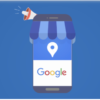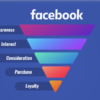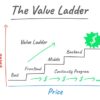Free
Discover the Step-by-Step Copywriting Process
There’s a proven step-by-step copywriting process that will help transform your words into powerful marketing tools, leading to explosive conversions. Have you ever found yourself struggling to write compelling copy for your product or for other businesses? It’s like trying to solve a puzzle and not knowing where to start.
But don’t worry, there is a science and an art to writing copy that performs well. And it’s completely understandable if you’ve been struggling with it.
Learning how to write high-converting copy doesn’t have to feel like learning a new language. With the right process and preparation, you can write great copy without feeling lost or unsure of what to do.
In this guide, we’re going to break down the copywriting process and show you how to prepare before you start writing. By following these steps, writing high-converting copy will become much easier.
Make sure to bookmark this guide, as it will be your go-to resource as you create your next piece of copy.
It all begins with the most important step of all…
Step #1: Define Your Goals
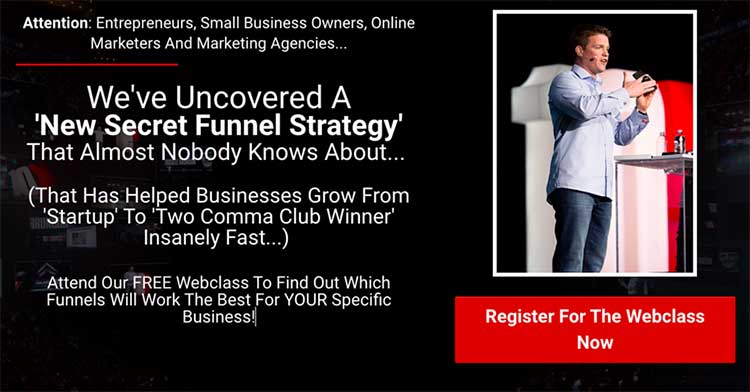
Before you start writing, take a moment to think about what your actual goal is. Selling may not always be the objective of your copy. It could be to get sign-ups for a waitlist, subscriptions to your email list, or even just to get people to watch a demo or grab a free offer.
Determining your goals beforehand ensures that every word you write aligns with your objective. Consistency is key to achieving your goal.
Step #2: Understand Your Customers
Now that you know your goal, it’s time to understand your customers. This is a step that many people skip, but it’s crucial for creating effective copy.
To provide a solution that resonates with your customers, you need to know what they want, why it’s important to them, and what they need to hear in order to believe that you can help them.
There are a few ways you can gather this information. Consider conducting customer interviews, where you can ask open-ended questions and gain valuable insights. You can also analyze reviews to understand what people in the market are looking for.
By understanding your customers, you can create copy that truly speaks to their needs and drives conversions.
Now that you have a clear and concise guide to the copywriting process, you can confidently create copy that resonates with your audience and achieves your goals. Happy writing!
Want to know the secret to crafting compelling copy? Look no further! We’ve got you covered with easy-to-follow steps that will make your writing shine.
Tap into Online Communities
Get valuable insights straight from the source – your potential customers – by joining online communities like Reddit, Facebook groups, and niche forums. These treasure troves of information allow you to eavesdrop on conversations and understand what your audience really wants.
For example, let’s say you’re in the productivity niche. By browsing a Reddit thread where people discuss planning their perfect day, you’ll uncover golden nuggets of information that can shape your offer and cater to their needs.
Leverage Customer Support Interactions
Don’t overlook the power of your customer support team. They have direct contact with your customers and can provide valuable information about their most frequently asked questions and recurring issues. By addressing these concerns in your copy, you’ll demonstrate empathy and build trust with your audience.
Spy on Competitors
Take a peek at your competitors’ frequently asked questions and see what their customer support team is spending the most time helping people with. This will give you a deeper understanding of your target audience and allow you to differentiate yourself by providing solutions they haven’t thought of.
Harness the Power of Analytics
Don’t underestimate the power of data. Analytics tools like Google Analytics offer incredible insights into what your customers want. By analyzing which content resonates the most with your audience, you can replicate its success in your copy.
Pay attention to metrics like bounce rate and average time on page. A high bounce rate may indicate a captivating headline but lackluster content, while a longer average time on page suggests that the content deeply resonated with your audience. Shape your headlines around what hooks your readers and craft copy around the topics they spend the most time exploring.
With this step-by-step process, you’ll have all the tools you need to create copy that truly speaks to your audience. Happy writing!
When it comes to creating compelling copy, there are just 3 things you need to focus on:
Understand Your Audience’s Frustrations & Fears: By identifying the challenges and obstacles your potential customers are facing, you can tailor your marketing messages to position your product or service as the perfect solution.
Uncover Their Wants & Aspirations: Get inside the minds of your audience and tap into their desires, dreams, and goals. By appealing to their deeper motivations, your messaging will resonate on both a logical and emotional level.
Address Key Purchase Drivers: Highlight the primary reasons why someone would choose to buy your product or service. By addressing these motivations head-on, you can tip the scales in your favor and persuade customers to take action.
Now, let’s dive into each of these components and discover exactly what you should be looking for.
Step 1: Frustrations & Fears
Ask yourself these 4 key questions:
What obstacles are preventing your audience from achieving success and happiness?
Are there any systems in their life or job that frequently fail?
Do they struggle with using or understanding certain products or services?
What are their common complaints about similar offerings in the market?
By understanding their frustrations, you can position your copy as the solution they desperately need.
Step 2: Wants & Aspirations
Consider these important aspects:
What do your audience members want for themselves?
What are their desires for the people around them?
What are their aspirations and goals?
What values are they willing to uphold to achieve their objectives?
By tapping into their wants and aspirations, you can create copy that speaks directly to their dreams and goals.
Step 3: Key Purchase Drivers
To address the factors that drive purchasing decisions, ask yourself:
What features are must-haves for your audience?
What are their expectations regarding service and quality?
What objections might they have, and how can you overcome them?
Are there any other decision-makers involved, and what do they need to hear?
Remember, you want to focus only on what is relevant to your specific offer to ensure your copy truly resonates with your audience.
Ready to unlock the secrets of effective copywriting? Get our top tips and tricks here!
Step #3: Create a Before & After Table
Once you have all the necessary information, it’s time to organize it in a clear and accessible way. Start by creating a “Before & After” table that showcases the transformation your ideal customer desires.
In the “before” column, outline the frustrations and fears they experience. In the “after” column, highlight their wants and aspirations.
By visually presenting the desired outcome, you can make it easier for your audience to connect with your product or service.
Start crafting captivating copy today by following this simple step-by-step process!
Step #4: Find Your Unique Value Proposition
Congratulations! You now have everything you need to write a phenomenal copy. The next step is uncovering the unique value proposition of your offer.
This is the promise of the value you’ll deliver and a clear statement of the benefits your customers can expect.
It’s the primary reason someone would choose your offer over your competitors’.
Your unique selling proposition (USP) will also play a role in determining your headline and subheadline.
By understanding your USP before you start writing, you can stick to one central message and avoid confusing your audience with different pitches.
To accomplish this, there are 3 key things you need to do:
1) Define Your Product’s Features
Start by listing out the main functionalities of your offer. These features will serve as the starting point to turn them into benefits that matter to your audience. Ask yourself, “How does this benefit the user?” or add “so you can” to the end of each feature.
2) Analyze Your Competition
Identify and analyze your direct competitors with similar offers. Examine how they’ve positioned their offers and determine what sets you apart. Understand what makes your product or service better.
3) Articulate Your Unique Value
Once you’ve connected your own features to the benefits and differentiated yourself from your competitors, it’s time to articulate that value to your audience. Address their pain points and explain how your product solves their specific problems or fills gaps in the market.
Now that you’ve done the research and uncovered your unique value proposition, it’s time for the next step: writing your headline and subheadline.
Step #5: Craft an Attention-Grabbing Headline & Subheadline
Start your writing process with the headline and subheadline. By creating these two elements first, you can ensure that the rest of your message aligns with your final call to action.
Your headline should convey the biggest benefit your product offers, while your subheadline explains who the benefit is for and why it matters to them.
Use one of these formats to structure your headline and subheadline:
1) Problem-Solution: Identify the problem and tease a potential solution.
Example:
Headline: “Tired of chaotic project management?”
Subheadline: “Streamline Tasks & Boost Productivity With [Your Product].”
2) Feature-Benefit: Highlight a unique feature and explain its benefits.
Example:
Headline: “Discover the Power of Artificial Intelligence in Email Marketing”
Subheadline: “Automate Your Content Writing Process and Increase Efficiency.”
3) Question-Answer: Ask a question with a “yes” answer and present your offer as the solution.
Example:
Headline: “Want To Maximize Your Online Sales Effortlessly?”
Subheadline: “Increase Your Sales By 15% with This Powerful Tool.”
With this valuable insight, you’re now ready to write compelling copy that captures attention and drives results.
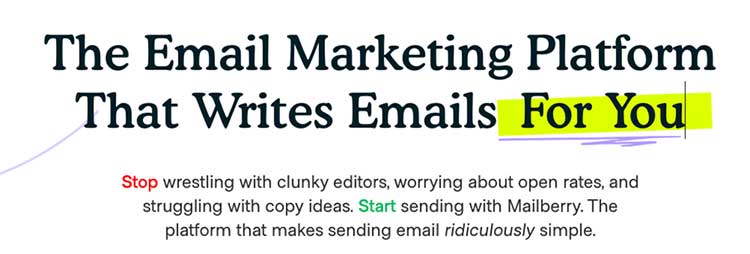
Step #6: Laying Out The Elements In Your Copy.
Once you have your killer headline and subheadline locked in, it’s time to think about the other elements you’ll use in your copy. These elements are crucial for guiding your visitors, showing them why your offer matters, and motivating them to take action.
Let’s take a look at some of these elements:
Social Proof: Testimonials, reviews, and case studies are great ways to build trust and show that your claims are legit.
Guarantee: Including a guarantee or refund policy helps reduce the risk for potential customers, leading to more conversions.
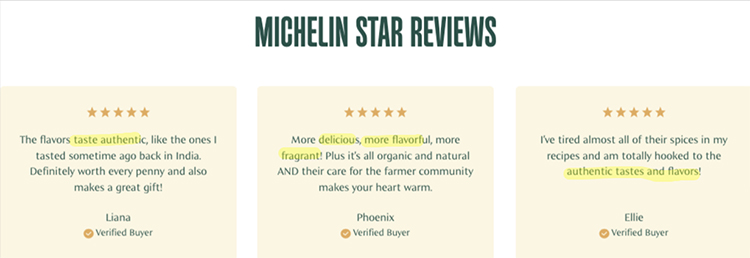
Story or Anecdote: Engage your audience on an emotional level by sharing personal stories, company origin tales, or customer experiences.
Scarcity & Urgency: Use phrases like “Limited Offer” or “Sale Ends Soon” to create a sense of urgency and encourage immediate action.
Comparisons or Alternatives: Show how your offer stacks up against the competition or your own previous offers, highlighting its superiority.
Bonuses or Addons: Sweeten the deal by offering special bonuses or add-ons, increasing the value of your offer.
Take a look at this example from ClickFunnels 2.0 to see how they do it:
ClickFunnels 2.0 is already an amazing tool, but it becomes even more incredible when you realize that you’ll also get access to a marketplace with professionally designed templates. No need to be a designer or coder – simply customize the templates to match your brand and message.
Ready to start your free trial and get access to all these great features? Click here.
Now, let’s move on to
Step #7: Writing Your Body Copy.
When it comes to your body copy, it’s all about diving deeper into the subject, addressing pain points, presenting solutions, and persuading your readers to take action.
To make writing your body copy a breeze, here are some helpful tips:
- Stay consistent with your tone and voice, making sure it resonates with your audience.
- Use short paragraphs, bullet points, and subheadings to make your text more easily digestible.
- Make it personal by addressing the reader directly.
- Focus on the benefits, not just the features of your offer.
- Keep your language clear and simple, avoiding jargon.
- And don’t forget the power of storytelling – it makes your message memorable!
So, let’s get started on writing compelling body copy that grabs attention and guides your readers towards their next step.
Step #8: Inject Your CTAs for Maximum Engagement and Conversions
So, you’ve written your body copy. Now it’s time to amp up the engagement and conversions with strategic CTAs (call to action).
Instead of just slapping a CTA at the end of your page, sprinkle them throughout your copy at key intervals. This way, even skimmers can find a way to move forward, no matter where they land on your page.
And don’t forget, some readers are eager to take action before reaching the end. By providing CTAs earlier on, you can harness their enthusiasm.
Plus, seeing your message (aka a CTA) multiple times increases the chances of people taking the action you want.
To find the best spots for your CTAs, check out these effective examples:
Example 1: Use CTAs after introducing features and benefits. This triggers your reader’s impulse to click when they see something they really want.
Example 2: Place a CTA after testimonials to capitalize on the trust and credibility you’ve built.
And don’t forget to end with a strong CTA. It wraps up your message and gives a clear next step.
Once your copy is in place, it’s time to A/B split test your CTAs and other elements on your landing page to optimize your clickthrough rate and measure conversions.
Step #9: Polish Your Copy with Proofreading & Editing
Before you hit the “go live” button, take a step back and proofread with fresh eyes. Ensure your message flows smoothly, is clear, and maintains a consistent tone and style.
Here are some editing tips:
Take a Break: Step away from your draft for a while to approach it with a fresh and objective perspective.
Read Aloud: Reading your copy aloud helps identify any awkward phrasing or unclear sections.
Seek Feedback: Ask someone else to read your copy and spot any issues or ambiguities you might have missed.
Trim the Fat: Eliminate redundant words or phrases to make your copy concise and impactful.
The goal is to catch any grammar or punctuation errors and make sure your copy is polished and professional. Focus on keeping everything central to your main message and ensure a smooth flow from the headline to the final call to action.
By following these steps, you’ll be able to write high-converting copy without feeling like you’re learning a second language. Get started now and unleash the power of persuasive writing.
>>>Join The One Funnel Away Challenge<<<




















